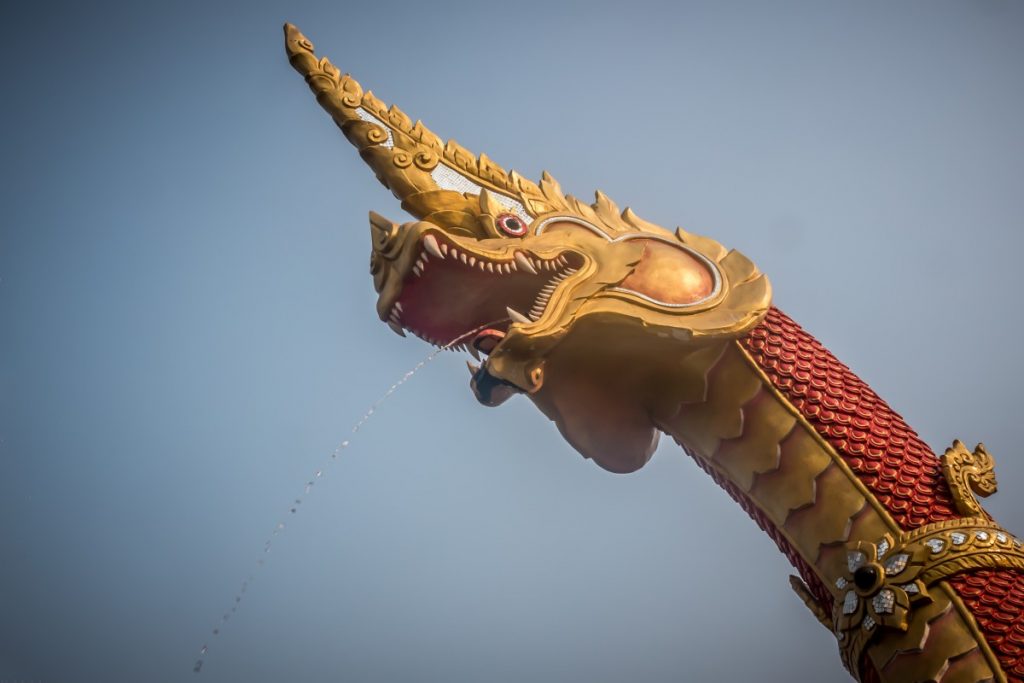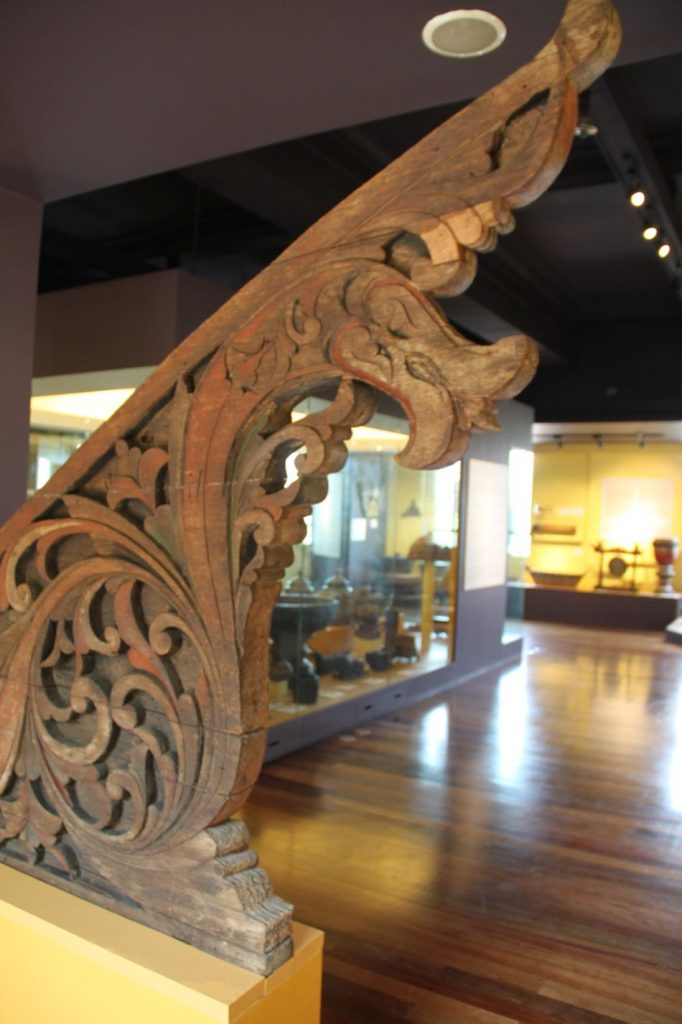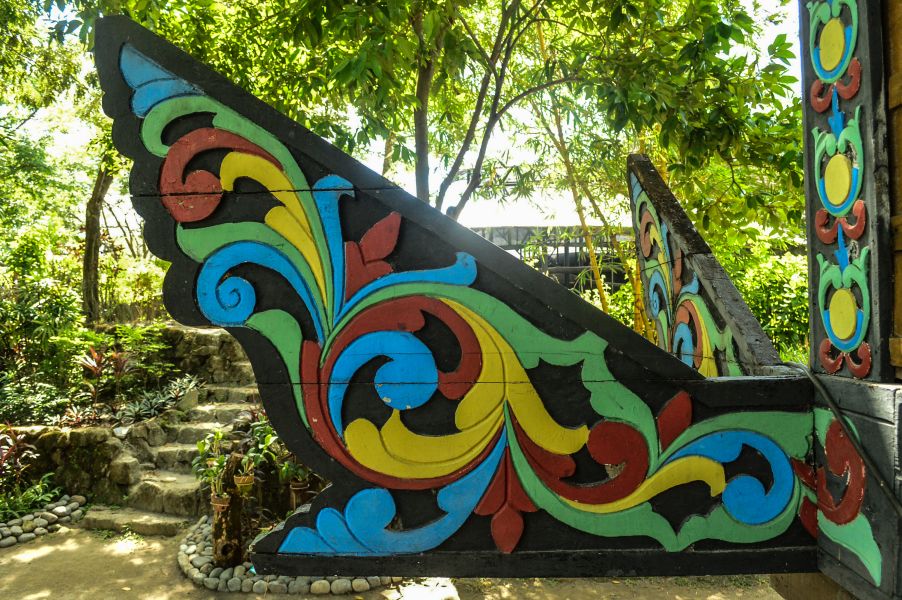People who know me know also that I have a soft spot for chess sets from the Philippines. I have commented on Staunton chess sets from the Philippines before. Today, I will show you something more exotic, the so called Moro chessmen. To start with an example, here is a specimen from my collection. The chessmen are from the 20th century, in this case with a king size of 66 mm.

The origin of Moro chessmen
Sets like this are exclusive to the Philippines. They originate from the second largest Philippine island Mindanao in the very south of the country’s archipelago. The Moro chessmen are to note for their simplicity and their beautiful design. Many have tried to fathom the roots of this design. There are a variety of theories. One thing which is more or less obvious is the nonrepresentational style and the rather abstract, nonfigurative design. It resembles in many ways the Islamic type of chess pieces despite some particularities not found elsewhere. It was therefore questioned already, whether sets of this style originated in the Philippines at all.
Islamic roots
The Philippines have a specific history. Due to the several centuries of Spanish rule, Christianity is the most widespread religion in the country. More than four fifths of the population are Roman Catholic. Nevertheless, the largest non-Christian group in the Philippines are the Muslim Moros. They have about 4 million members, representing about 5% of the total Philippine population.
As early as 1380 the Arab Sarif Maqdum came to Mindanao as an Islamic missionary. Malay conquerors followed. They founded Muslim sultanates in southern Mindanao and thus promoted Islamisation. However, they largely tolerated the old customs of the locals. One of them, Shariff Mohammed Kabungsuwan of Johor, founded the Sultanate of Maguindanao in 1475. He was a member of the royal house of Malacca. The Sultanate of Sulu had already been founded in 1457.
The founding of these sultanates set in motion the spread of Islam in the southern parts of Mindanao, Palawan, Basilan and Sulu. The term “Moro” as a short form to address the Moro or Bangsamoro people derives from the Spanish term for “Moors”. It is used as a collective term referring to an ethnolinguistic group of 13 different people, including the Maguindanao, named after the ancient sultanate mentioned above, the Maranao and the Tausug, also called Suluk, the majority of which are Muslim.
The striking design of the knights
Moro chessmen, like other chess sets from the Philippines, are traditionally made from local hardwood, in particular Kamagong or Banti wood, sometimes in combination with buffalo horn used for the dark side pieces. The most striking pieces are the knights. Sometimes (but not always, as can be seen in the set above) they are even taller than the king or at least taller than every other piece on the board.

There are many theories as to where the elaborate design of the knights with its ornate arabesque, flowing and interlaced lines, comes from, what it represents and what it stands for. Some associate the particular design with the “Naga” pattern, naga being a Sanskrit term referring to a mythical dragon or serpent noted for its wisdom, agility, power and bravery.

Some also say, the design represent a horse’s mane, the wind or the sea. Likewise, theories as to what the design symbolises range from good luck to status to protection against storms and hurricanes.
Jim Joannou links the design to the “Okir” pattern (sometimes also written “Okkir” or “Okkil”), a local symbol of good luck, status or power. This design is also used in the traditional Filipino dress, the “Barong Tagalog”, worn by men on special occasions. Jim Joannou describes the Okir design as “a flowery pattern with serpent influences.

In the village communities of the Maranao, the village chiefs use this design on their houses to show their status and prestige”. This is known as “panolong”, which are beam extensions decorated with this very pattern.

Rare collectors’ items
Moro chessmen are not entirely uncommon. Nonetheless, they are somewhat rare, in particular old ones, in that the region in which the Maranao people live, who are the makers of this type of chess sets, was in constant state of war since the 1960s. Getting access to such sets is therefore rather difficult. The sets are only produced by local carvers. They work mainly with hand tools or basic hand driven lathes and without any predetermined pattern, but from pure memory. The making of a set may take several weeks to complete. Sometimes more than a year can pass between the making of two sets. This explains why differences between sets can be rather big.

